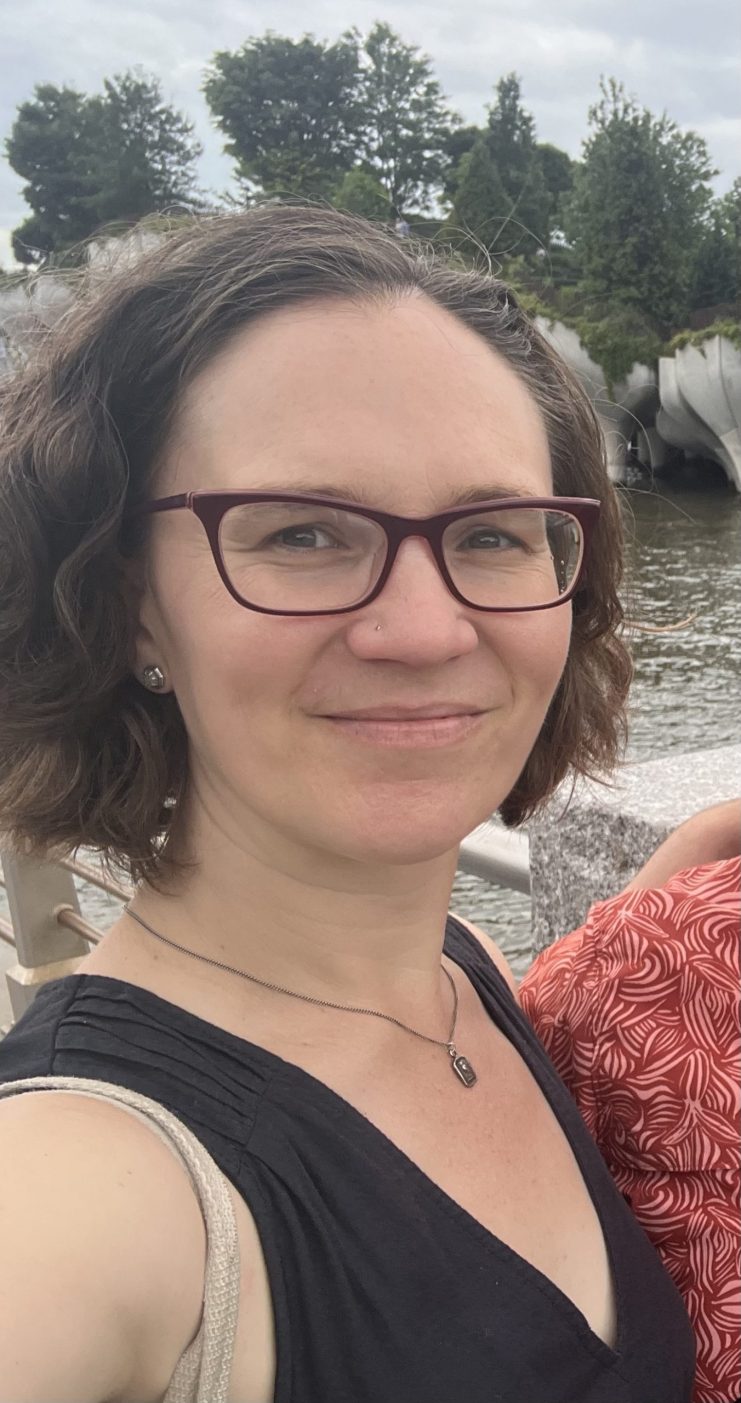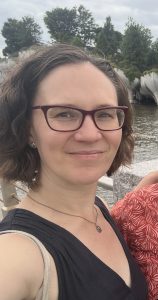
SEL and Academics: An Inquiry into the Role Writing Plays in a Student’s Perception of Middle School Readiness
As a lifelong learner and believer in inquiry, I have many questions. One of the first questions I developed as I was leading circles with 10 and 11-year-olds during my first year of teaching 5th graders was the idea of readiness for Middle School.
Our circle routine is set, the students have their talking piece, and the prompt is, “What is on top for you today? What do you want your classmates to know?” As the talking piece is passed from student to student, I hear echoes of their weekends and sleepovers they are looking forward to. Then, there is often someone who brings up Middle School. “I’m worried about Middle School”. “I am nervous and excited to leave my elementary school community.”
As I listened to the students, I realized these wonderings and worries were at the forefront of my mind as well. Lead By Learning’s Collaborative Inquiry Group, in partnership with the Oakland Unified School District Social Emotional Learning Office, has been the perfect outlet for me to continue to reflect and learn to improve my teaching practice by learning directly from the work my students and I are already doing. When I began articulating this worry to my thought partners, teachers from across the district in our Inquiry Group, one of the questions that surfaced was about what it means to be ready for middle school. If my students could leave 5th grade feeling like a writer and feeling confident, then I could say they are ready for Middle School. But I want them to be able to feel this and own this as well. This left me with a series of questions:
- Do my students see themselves as writers and learners?
- Are my students confident as learners?
- Do these two ideas align for them?
I began my process of inquiry by collecting student surveys. I wanted to hear directly from my students about how they felt about themselves as writers and as learners. I asked my students 3 questions. They needed to rate themselves on a 4-point scale and add any extra thoughts or explanations that they saw fit.
- How do you feel about yourself as a learner?
- How do you feel about yourself as a writer?
- What do you want your teacher to know about this?
What struck me in the data was that while 96% of my students felt confident as learners, only 56% of them felt the same way about themselves as writers. This made it clear to me that I needed to zoom in on their opinions of themselves as writers. When I brought this data and my questions to my inquiry group, we started diving into some of the patterns and trends we noticed from the answers that my students were giving. Some students reflected on the effort it takes to write. Some students simply didn’t have “high goals” for themselves. My listening partners and I began to wonder why my students had this dislike or disinterest in writing and improving their writing. Also, how do my students define writing to begin with? With this question in mind, I headed back to my 5th graders with a writing survey. They were asked to answer the following questions on a Google form:
- In your opinion, what makes someone a writer?
- Are you a writer? (yes or no)
- Explain.
- What are you working on improving in your writing?
- What are you doing well as a writer?
- How do you know what you are doing well and what you need to work on?
- Are you confident as a learner?
As I poured over this round of responses, I was looking for interesting themes to arise. The biggest thing that I noticed was that my students were able to articulate themselves well as far as what a writer is. They explained that writers “are committed to their writing”. Writers also “write a story with integrity”.
When I started scrolling through the next question, I noticed that the students who self-selected as nonwriters explained that it was because they didn’t like writing and, even more specifically, they didn’t like to write by hand. The students who described themselves as writers usually included that they enjoy the process of writing, especially when it’s creative writing. Some students were even able to articulate some specific writing conventions that are expected from student writing as markers for being a writer. One student explained that they were a writer because, “I can write and type fast and accurately. I can write above-grade-level summaries and essays quickly and quietly. I can convince people through my writing. See, I am convincing you right now that I am a good writer”.
Every student was able to describe at least one thing they wanted to improve about their writing, from grammar to adding more specific details and quotes to their research writing. What stood out to me was that not everyone could articulate something that they are doing well in writing. The overall theme that I found in their response to how they knew what they were doing well was feedback. Some students emphasized peer feedback, and others spoke about adult feedback, either from the teacher, their parents, or other adult support at school or home.
Alongside my colleagues as a Public Learner, we began to wonder more. How would these students respond when asked to create a rubric themself and give feedback to themselves specifically?
My students and I looked at rubrics in many different facets of our learning. In order to understand even more about how they were self-identifying as confident or unconfident writers, I asked the kiddos to create their own rubric and then also self-assess on their created rubric. I wondered what specific language they would use to describe writing, and also what areas they saw as strengths as well as areas of growth. Some key language that my students used in their rubrics gave me some insight into what they saw as important characteristics of 5th-grade writing. One student’s self-reflection included, “needs quotes but has a lot of information of the topic and is well organized. Conclusion needs work though”.
When the students were asked to create their own rubrics for the writing they were doing, it helped me see not only what they thought made a writer, but what they thought their own writing should be composed of. In this way, I noticed that my students could more easily name the ways in which their writing was strong and the specific ways in which they could improve. While their rubrics were not as detailed as my teacher-created rubrics, I appreciated this insight into their definition of 5th-grade writing. My thought partners in our Lead by Learning sessions wondered if this exercise would continue to build my students’ identities as writers. It made sense to give another survey to check in on how they were feeling now. The data showed that my students had some overall improvement. Now, 85% of my students were identifying as a writer at a 3 or 4 on 4 4-point rubric.
By the end of the school year, I was circulating my classroom while my students were working on finishing up a writing assignment. I walked by two students who had their Chromebooks out, and they were chatting. I checked in to see if they were on task. They were able to explain to me that they were reading each other’s writing, and they named the explicit feedback they gave to one another, how they were going to improve on their writing based on the feedback, and who they wanted to have read their writing next in the classroom to get further feedback. This observation, paired with the fact that 85% of my students consider themselves writers and confident learners, reminds me of the power of self-awareness and self-assessment. The fact that one of my students was able to reflect that they didn’t have very high goals for themselves at the beginning of the year and then were self-identifying as a writer and a confident learner by the end of the year is a reminder of the thoughtful, slow, reflective process of learning.
In thinking about next school year, I continue to have questions. How do I carry on the work we did this year and get it going from the beginning? What do I need to be patient about in order to trust the process of learning? How do I allow for the natural progression of skill development? I look forward to investigating these questions further and learning more about what it really means to be ready for Middle School with my next group of 5th graders.
 Meg Shaughnessy has been teaching in Oakland for 15 years. She taught 2nd grade for the first 12 years of her career until 2023, when she transitioned to teaching 5th grade. When she is done teaching for the day, Meg can be found reading one of the many books from her stack waiting to be read by her nightstand or playing board games with her 4-year-old and 7-year-old on the living room floor. She also enjoys feeding the people she loves, including herself. Scones anyone?
Meg Shaughnessy has been teaching in Oakland for 15 years. She taught 2nd grade for the first 12 years of her career until 2023, when she transitioned to teaching 5th grade. When she is done teaching for the day, Meg can be found reading one of the many books from her stack waiting to be read by her nightstand or playing board games with her 4-year-old and 7-year-old on the living room floor. She also enjoys feeding the people she loves, including herself. Scones anyone?
Interested in working with Lead by Learning to support your educators and teacher leaders? Connect with a member of our team to learn more about our partnerships.
